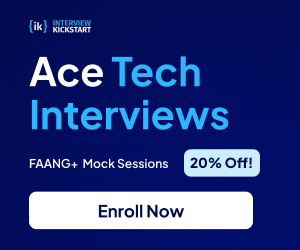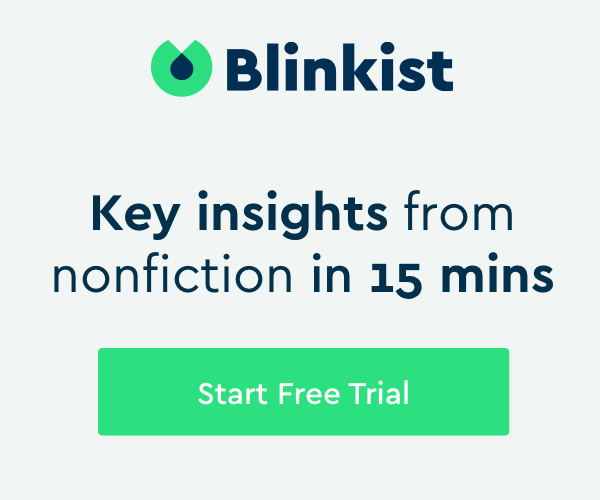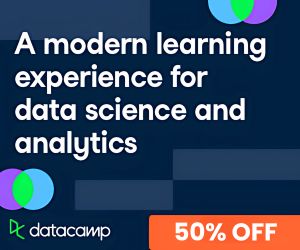In today's educational landscape, artificial intelligence is revolutionizing how we address diverse learning challenges, particularly through innovative solutions like ai for learning challenges. From adaptive platforms that personalize instruction to assistive technologies that promote inclusivity, AI tools are creating unprecedented opportunities for students of all abilities. This comprehensive guide explores the cutting-edge AI resources transforming education in 2025 and beyond.
AI for Learning Challenges: Tailored Solutions for Every Student

Photo by Alex Knight on Pexels
AI-driven adaptive learning systems are fundamentally changing how content is delivered to students with varying needs and abilities. These platforms continuously analyze student performance data to make real-time adjustments to learning experiences.
Dynamic Content Adjustment
Modern adaptive platforms like MagicSchool—currently serving over 5 million teachers—use sophisticated algorithms to adjust content difficulty and pacing based on individual student performance. This dynamic approach ensures that:
- Students receive appropriately challenging material
- Learning paths adapt in real-time to performance
- Content difficulty scales with mastery
- Engagement remains high through appropriate challenge levels
“When content automatically adjusts to student performance, we see significant improvements in both achievement and motivation,” notes research from PowerSchool, which found that adaptive systems can reduce achievement gaps by up to 27%.
Predictive Analytics for Early Intervention
AI systems now employ predictive analytics to identify at-risk students before traditional assessment methods might catch issues:
- Pattern recognition detects subtle engagement changes
- Comprehension gaps are identified through response analysis
- Early warning systems alert educators to potential learning challenges
- Intervention can occur before students fall significantly behind
Quizizz exemplifies this approach by dynamically adjusting question difficulty and generating real-world scenario-based problems tailored to individual student performance patterns.
Customized Learning Pathways
Perhaps the most powerful feature of adaptive platforms is their ability to create truly personalized learning journeys:
- AI analyzes individual skill levels across subjects
- Targeted exercises address specific knowledge gaps
- Foundational concepts must be mastered before advancement
- Learning sequences adapt to individual progress rates
The U.S. Department of Education reports that such customized pathways can increase completion rates by 30-40% while reducing time to mastery by up to 50%.
Assistive Technologies for Inclusive Education

Photo by cottonbro studio on Pexels
AI-powered assistive technologies are breaking down barriers for students with disabilities, creating more inclusive learning environments where diverse needs can be met effectively.
Communication and Language Support
For students with communication challenges, AI offers transformative solutions:
- Text-to-speech systems with near-human vocal synthesis help students with vision or reading challenges access written content.
- Speech-to-text tools assist those with motor or speech impairments in producing written work.
- Language translation and simplification technologies translate complex texts into more accessible language and summarize academic material, supporting students with dyslexia or language-processing difficulties.
- Augmentative and alternative communication (AAC) devices generate speech from text or symbols, enabling nonverbal students to participate fully in classroom discussions.
These tools align with legal requirements like the Individuals with Disabilities Education Act (IDEA) and new Department of Justice rules mandating accessible digital content.
Visual Recognition and Accessibility
For visually impaired learners, AI visual recognition technologies provide critical support:
- Image description tools automatically generate detailed descriptions
- Navigation assistance apps help students move independently through school environments
- Document conversion utilities transform visual materials into accessible formats
- Real-time environmental recognition provides spatial awareness
“These technologies don't just provide access—they create independence,” explains Walden University's research on AI in education, which found that 87% of visually impaired students reported increased classroom participation when using AI tools.
Multilingual Support
AI translation features have become increasingly sophisticated, supporting multilingual students and English language learners:
- Real-time translation of classroom discussions
- Multilingual content generation in 15+ languages
- Cultural context preservation in translations
- Vocabulary building through contextual learning
Interactive Learning Resources for Engagement

Photo by Vitaly Gariev on Unsplash
For students with attention challenges or engagement difficulties, AI-powered interactive learning resources offer compelling solutions.
Gamified Learning Platforms
AI-enhanced gamification creates immersive learning experiences particularly beneficial for students with ADHD or attention challenges:
- Virtual reality environments provide distraction-free learning spaces
- Simulations offer hands-on experience with abstract concepts
- Achievement systems maintain motivation through immediate rewards
- Adaptive difficulty maintains the optimal challenge level
Research from ISTE shows that gamified AI platforms can increase time-on-task by up to 45% for students with attention difficulties.
Real-Time Feedback Systems
Instant feedback systems powered by AI provide granular assessments that help students correct misconceptions immediately:
- Errors are highlighted with specific correction suggestions
- Feedback is delivered in real-time rather than days later
- Personalized hints guide students toward solutions
- Progress tracking shows improvement over time
Eduaide.AI exemplifies this approach with its feedback bot and assessment builder that reduce preparation time while ensuring materials meet diverse classroom needs.
Educator Support Tools

Photo by Pavel Danilyuk on Pexels
AI isn't just supporting students—it's also empowering educators to better serve diverse classrooms.
Instructional Design Assistance
Tools like StretchAI from ISTE act as coaching assistants for teachers:
- AI helps design Individualized Education Programs (IEPs)
- Differentiation suggestions are generated based on student data
- Research-backed teaching methods are recommended for specific challenges
- Lesson modifications address diverse learning needs
“When teachers have AI support for differentiation, they report being able to effectively address 40% more learning variations in their classroom,” according to University of Illinois research.
Content Generation and Modification
AI content generators create diverse materials tailored to classroom needs:
- Quizzes and assessments at varying difficulty levels
- Discussion prompts that engage different learning styles
- Multilingual materials for diverse classrooms
- Modified content for different reading levels
Organizations like AI for Education partner with schools to deliver professional development programs focused on responsible AI adoption, addressing concerns about overreliance and data privacy.
Ethical Considerations in AI Education Tools

Photo by Jon Tyson on Unsplash
As AI becomes more prevalent in education, ethical considerations must remain at the forefront.
Algorithmic Fairness
The U.S. Department of Education emphasizes the importance of algorithmic fairness audits to prevent bias in AI educational tools:
- Regular testing ensures tools work equally well for all demographics
- Diverse development teams help prevent built-in biases
- Transparency in algorithm design allows for scrutiny
- Continuous improvement addresses discovered inequities
“Without careful attention to fairness, AI systems risk amplifying existing educational inequalities rather than reducing them,” warns the Department's comprehensive AI report.
Data Privacy Protections
Robust data privacy protections are essential when implementing AI in educational settings:
- Student data must be securely stored and transmitted
- Clear policies govern data retention and usage
- Parental consent protocols protect minor students
- Anonymization techniques protect individual privacy
Tools like GoGuardian and Google Classroom now embed AI-driven analytics to monitor student engagement and flag at-risk learners while maintaining privacy standards.
Digital Citizenship Education
ISTE's curriculum includes AI ethics modules designed to teach students about responsible technology use:
- Critical evaluation of AI-generated content
- Understanding of AI limitations and biases
- Responsible creation using AI tools
- Ethical considerations in AI development
Implementation Challenges and Best Practices

Photo by RDNE Stock project on Pexels
Despite their potential, AI educational tools face implementation challenges that must be addressed for successful adoption.
Access and Equity Concerns
Uneven access to AI tools across schools remains a significant concern:
- Rural and underfunded schools often lack necessary infrastructure
- Cost barriers limit adoption of premium AI solutions
- Technical support varies widely between districts
- Teacher training opportunities are inconsistently available
Balancing AI and Human Instruction
Finding the right balance between AI assistance and human instruction is crucial:
- AI should augment rather than replace teacher expertise
- Core skill development requires human guidance
- Social-emotional learning benefits from human interaction
- Critical thinking development needs human facilitation
“When used strategically, these technologies empower students to engage with curricula at their own pace and demonstrate knowledge more confidently,” note researchers studying AI implementation.
Conclusion
AI tools and resources for learning challenges represent a transformative force in education, offering unprecedented opportunities to personalize learning, increase accessibility, and support diverse student needs. As these technologies continue to evolve, their thoughtful implementation—guided by ethical considerations and balanced with human instruction—promises to create more inclusive, effective learning environments for all students.
The future of education lies not in choosing between human teaching and AI assistance, but in finding the optimal integration of both to serve each student's unique learning journey.
Useful Links
- PowerSchool – AI in Education
- Quizizz
- U.S. Department of Education – AI Report (PDF)
- Walden University – Pros and Cons of AI in Education
- ISTE – AI Resources
- Eduaide.AI
- StretchAI (see ISTE resource)
- University of Illinois – AI in Schools: Pros and Cons
- University of San Diego – AI for Education
- GoGuardian
- Google Classroom
References
[1] 360Learning Blog on AI Learning Platforms
[2] Google AI for Educators
[3] Arizona State University AI Learning
[4] YouTube Video on AI in Education
[5] Intellum Blog on AI Tools for Education
[6] Axon Park Case Studies on AI in Education
[7] Digital Defynd AI in Schools Case Studies
[8] GWU Paper on Optimizing AI in Education
[9] Hyperspace Case Studies on AI in Enterprise Learning
[10] Faculty Focus on AI-Generated Case Studies











